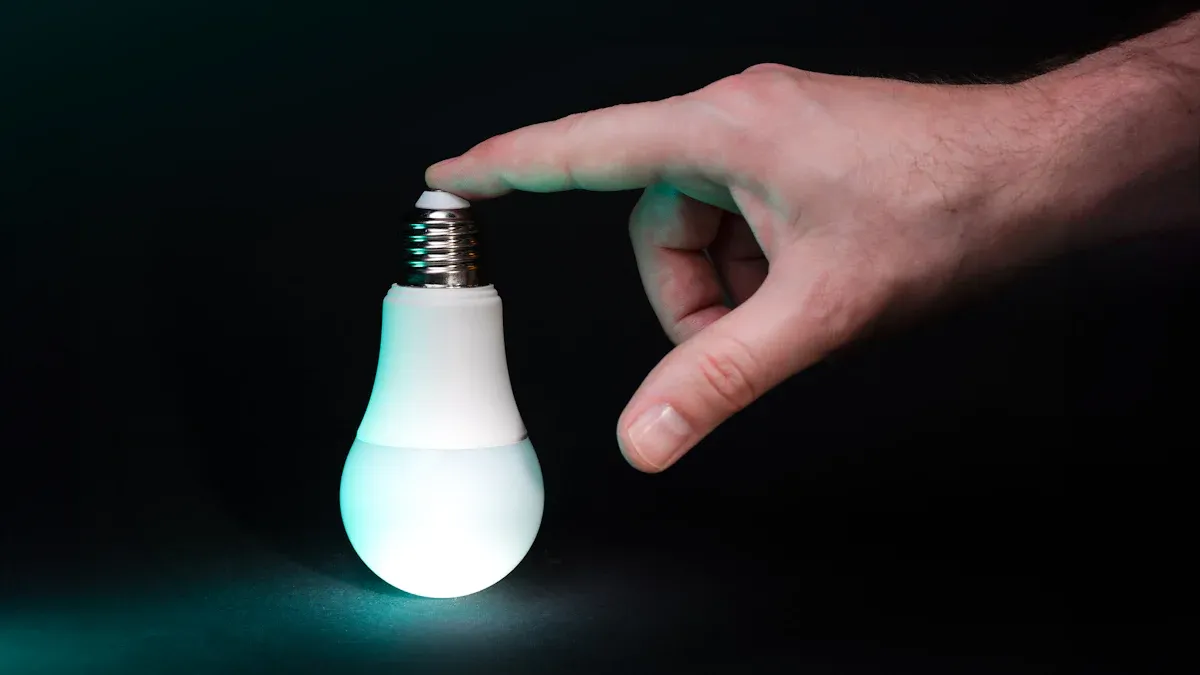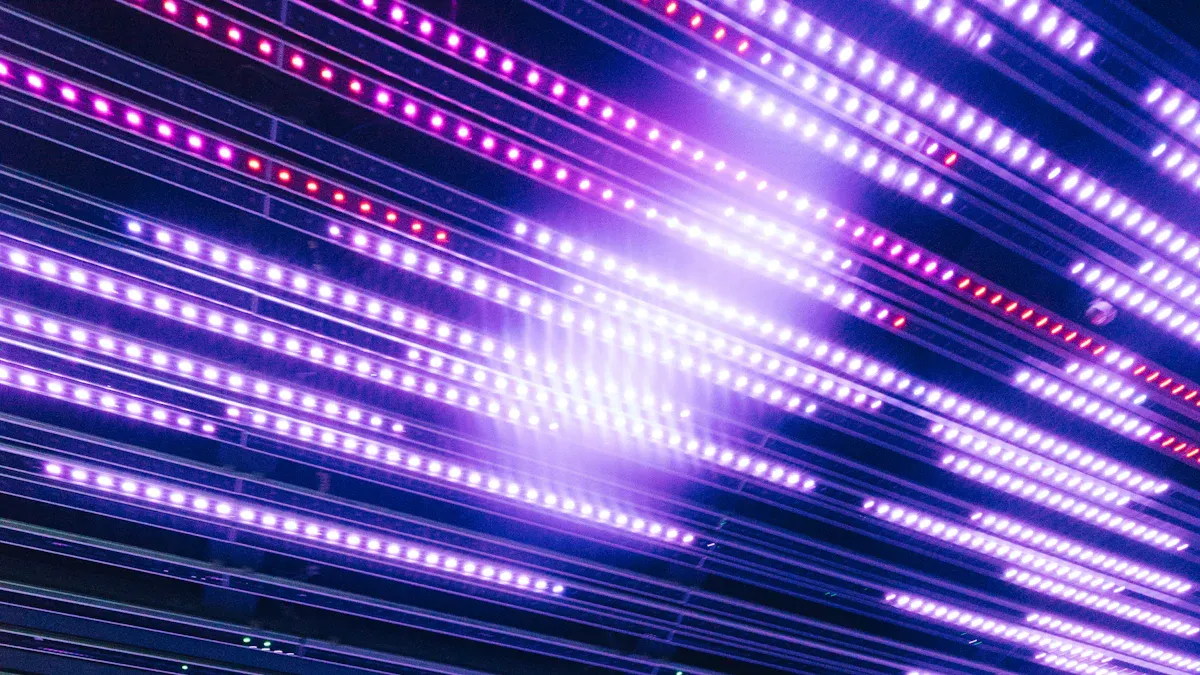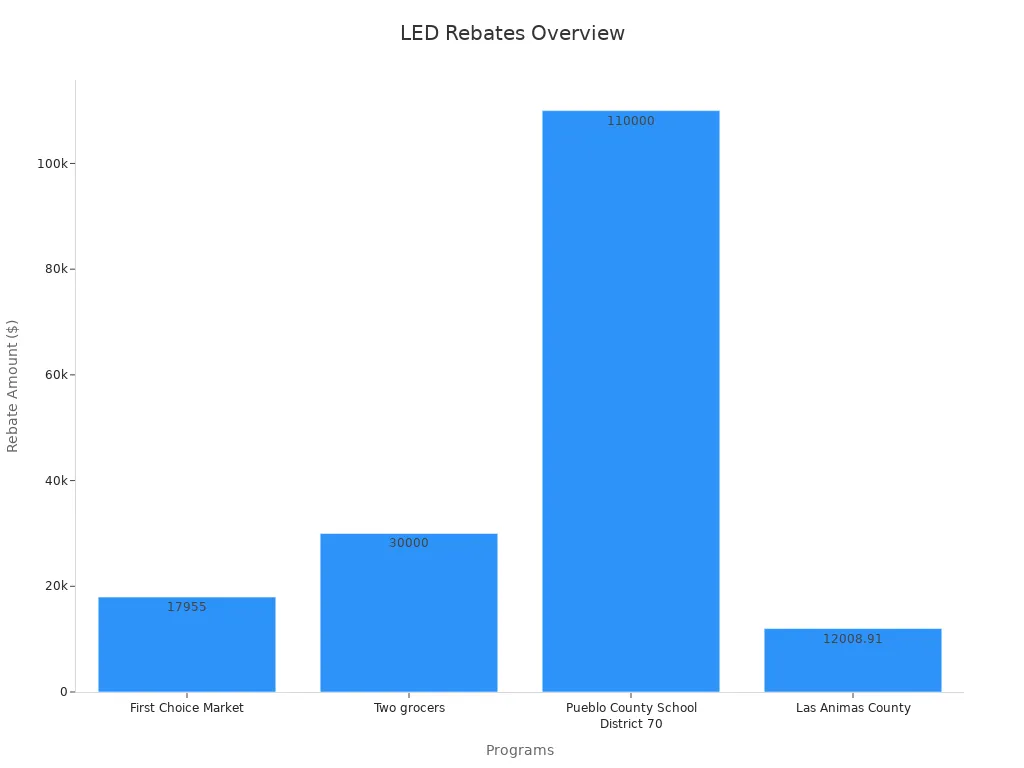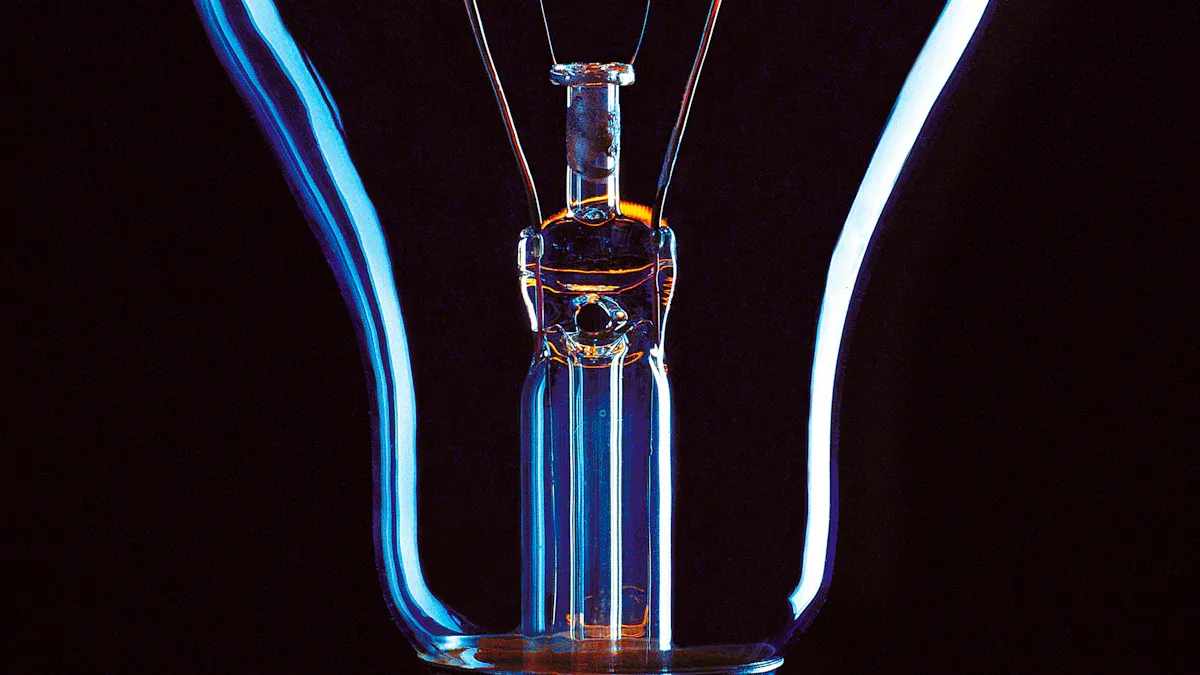Commercial LED Light Bulbs: Cost Analysis and ROI for Business Owners

Switching to LED lights not only saves money for your business fast but also provides a comprehensive Cost Analysis of your energy expenses.
LEDs use less energy, significantly cutting costs.
At home, lights account for 15% of electricity usage.
Families save about $225 each year with LED bulbs.
Businesses save even more because they consume more energy.
Studies show LEDs offer a 79% return on investment (ROI).
LEDs also last longer and require less maintenance.
They contribute positively to the environment and save energy over time.
LEDs are a smart choice for long-term business value.
For more information, feel free to check our About us section to learn how we can help you make the switch.
Key Takeaways
Using LED lights can lower energy bills by 75%. This saves businesses a lot of money.
LED bulbs last longer than regular bulbs. This means fewer replacements and less maintenance.
Some energy companies give discounts for using LED lights. This makes switching cheaper and helps you save more money.
LED lights make workplaces brighter. They reduce eye strain and help workers feel better and work harder.
Picking LED lights saves money and shows you care about the planet. This can make your business look better to others.
Financial Benefits of LED Lighting

Lower Energy Costs and Consumption
Using LED lights can cut your energy bills a lot. LEDs use up to 75% less power than old-style bulbs like incandescents. They turn electricity into light without wasting much as heat. For businesses, this means big savings on electricity costs.
Think about this: In 2012, only 9% of commercial buildings used LEDs. By 2018, that number grew to 44%. This shows how good LEDs are at saving energy. Experts predict that by 2050, LEDs might light up 95% of commercial spaces. Switching to LEDs saves money and helps create a greener future.
Reduced Maintenance and Replacement Expenses
LED lights last much longer than regular bulbs, sometimes 30 times longer. This means you don’t have to replace them often, saving time and money. Maintenance workers can focus on other tasks instead of changing lights.
For example, older lighting systems often have ballast failures, which are costly. LEDs don’t need ballasts, so you save on repairs and avoid interruptions. Choosing LEDs gives you long-term savings and fewer hassles with replacements.
Access to Energy Efficiency Incentives and Rebates
Many energy companies and governments offer rewards for using energy-saving lights. These rebates help cover the cost of switching to LEDs, making it a smart choice.
For example, Pueblo County School District 70 got $110,000 in rebates for using LEDs. They expect to save $500,000 on electric bills. A big retail chain also cut energy costs by 40% with LEDs. They even saw more customers and sales. These programs show how businesses can save money and help the planet.

By using these rebates, you can lower your costs and get the most out of LED lighting.
ROI Calculation for LED Lighting
Steps to Understand Current Lighting Costs
To figure out your ROI for LED lights, start with your current costs. Look at your electricity bills to see how much energy your lights use. Count the number of fixtures and note the type of bulbs. Multiply each bulb's wattage by the hours they are on to find total energy use.
Don’t forget maintenance costs. Old lighting systems often need repairs and replacements, which add up. By adding these costs, you’ll have a starting point to compare when thinking about upgrading.
Estimating the Cost of Switching to LED Lighting
The price of switching to LEDs depends on the type you pick. Here’s a simple guide:
Replacement Option | What It Means | Cost Details |
|---|---|---|
Fluorescent Lamp Replacement | Replace old fluorescent lamps | Not efficient or cost-saving |
Plug and Play Type A LED | Works with current ballasts | Saves energy and money |
Retrofit with Type B LED | Needs an electrician for changes | Costs more to install, saves later |
Hybrid Type AB LED | Works with or without ballasts | Cheaper if ballast works |
New Recessed Unit with LED | Replaces the whole system | Costs more upfront, saves long-term |
New Recessed Unit with Integrated LED | Full system change, non-replaceable lamp | High cost, fewer design choices |
LEDs may cost more at first, but they save money over time. For example, an LED bulb costs $4.99, while an incandescent bulb costs 94 cents. Over 10 years, running an LED costs $31.43, but an incandescent costs $236.
Finding Utility Rebates and Incentives
Rebates and incentives can help lower the cost of LED upgrades. Many programs reward businesses for using energy-saving products. These rebates can cover a big part of the installation cost.
To use these programs, choose approved LED products and show proof of purchase. For instance, ComEd offers great funding for lighting upgrades in Illinois. This makes it a top choice for businesses. Using these rebates can cut costs and boost your ROI.
💡 Tip: Waiting to upgrade your lights can cost you money. The longer you wait, the more you lose in energy and repair savings.
Calculating Energy and Maintenance Cost Savings
Switching to LED lights can save your business money. Understanding these savings helps you see how LEDs improve your budget.
Energy Cost Savings
LEDs use much less energy than older bulbs. They need up to 75% less power than incandescent or fluorescent lights. This means lower electricity bills for your business. For example, if your lights are on 10 hours daily, replacing a 60-watt bulb with a 10-watt LED saves 50 watts per bulb. Multiply this by all your fixtures, and the savings grow fast.
LEDs also stay cooler, which helps air conditioners work less. This extra benefit lowers energy use, especially in big buildings.
Maintenance Cost Savings
LEDs last much longer than regular bulbs. Incandescent bulbs last about 1,000 hours, but LEDs can last 25,000 to 50,000 hours. This means fewer replacements, saving money on materials and labor.
If your business has high ceilings or hard-to-reach lights, replacing bulbs can cost a lot. LEDs reduce these costs because they need fewer changes. They are also tougher and less likely to break, cutting maintenance costs even more.
💡 Tip: Write down your current maintenance costs. This will show how much you can save with LEDs. Fewer replacements and lower labor costs make LEDs a great choice.
By saving on energy and maintenance, LEDs are a smart buy for businesses. They help you save money and run a greener operation.
Long-Term Cost-Benefit Analysis

Comparing Total Cost of Ownership: LED vs. Traditional Lighting
LED lights cost less over time than older bulbs. Regular bulbs, like incandescent or fluorescent, seem cheaper at first. But they don’t last long and use more energy, costing more later. For example, incandescent bulbs last 1,000 hours, while LEDs last up to 50,000 hours. This means fewer replacements and lower upkeep costs for businesses.
LEDs also use much less energy, cutting electricity bills by 50-75%. Over time, these savings grow, making LEDs a smart buy. A study by World Star Tech showed $38,375 saved yearly after switching to LEDs. This proves LEDs are better for long-term savings compared to older lighting.
Evaluating Upfront Costs Against Long-Term Savings
LED bulbs cost more upfront than regular ones, but they save money later. For example, an LED bulb might cost $4.99, while an incandescent bulb costs $0.94. However, the energy and maintenance savings over time make LEDs worth it.
Rebates and rewards from energy companies or governments can help lower the starting cost. These programs make switching to LEDs even better. For instance, Bright Manufacturing Plant spent $50,000 on LEDs and saved $35,000 yearly. They got their money back in just 1.4 years. This shows how LEDs save money and give great returns over time.
Determining Payback Period and Lifetime Value
LEDs pay for themselves quickly because they use less energy and need less care. For example, Springfield City spent $2.5 million on LEDs and saved $550,000 each year. They earned back their money in about 4.55 years.
LEDs also last a long time, up to 50,000 hours. This means fewer replacements, saving time and money. Government programs like tax breaks and rebates can make the payback period even shorter. Switching to LEDs gives long-term savings and great financial benefits, making them a smart choice for businesses.
Additional Benefits of LED Lighting
Environmental Impact and Sustainability Benefits
Switching to LED lights helps the environment in big ways. LEDs use up to 80% less energy than older bulbs. This lowers electricity use and cuts harmful gas emissions. For example, a 60-watt incandescent bulb uses much more power than a 12.5-watt LED for the same brightness. This means businesses can reduce their carbon footprint easily.
LEDs also last longer, so there’s less waste from replacing bulbs often. The US EPA says LED lights will save 88 terawatt-hours of power between 2010 and 2030. In the UK, switching to LEDs could lower carbon dioxide emissions by 5 million tonnes each year. By using energy-saving lights, you help the planet and save money too.
💡 Did you know? Businesses in the UK could save £1 billion yearly with LEDs by using less energy.
Enhanced Lighting Quality and Workplace Productivity
LED lights make workplaces brighter and better for employees. They reduce eye strain and tiredness, making people feel more comfortable. Better lighting helps workers focus and improves their mood, which boosts productivity.
Studies show how LED lighting improves work performance:
Study Year | Key Findings | Productivity Improvement |
|---|---|---|
2010 | LEDs improve mood and speed up tasks | |
2013 | LEDs boost mood and work quality | 33% higher mood ratings |
1994/1998 | Better lighting increases productivity | 15-25% fewer absences |
Switching to LEDs creates a brighter workspace that helps employees feel good and work better.
Positive Impact on Business Reputation and Customer Perception
Using LED lights shows your business cares about the environment. Customers like companies that focus on being eco-friendly. Energy-saving lights improve your business image and build trust with clients.
A study found that businesses using LEDs often have a better reputation. This can help keep current customers and attract new ones. Choosing LEDs saves money and shows your business leads in sustainability.
🌱 Tip: Share your LED upgrades in ads to show your green efforts.
Using LED lights can save your business a lot of money. LEDs use less energy, saving $10,000 to $50,000 yearly for big buildings. They last longer, so you spend less on fixing or replacing them. Tax breaks and rebates help lower the cost of switching to LEDs. Most businesses get their money back in 2 to 4 years. After that, they keep saving more. LEDs also help the environment and make workplaces better. Choosing LEDs is a smart and green decision for your business.
FAQ
What are the main advantages of switching to LED lighting for businesses?
LED lights save energy, last longer, and need less fixing. They also make workplaces brighter and help the environment. These features make LEDs a smart and green choice for businesses.
How do I calculate the ROI for upgrading to LED lighting?
First, check your current energy and repair costs. Compare these with the savings from using LEDs. Add rebates and rewards to see how fast you’ll save money and gain benefits.
Are there any government programs or rebates available for LED upgrades?
Yes, many governments and power companies offer rebates for LEDs. Look for local programs and use approved LED products to qualify. These rebates can lower the cost of switching to LEDs.
💡 Tip: Ask your power company about rebates in your area to save more.
How long do LED lights typically last?
LEDs can last 25,000 to 50,000 hours, depending on the type. This is much longer than old bulbs, so you won’t need to replace them often. This also saves on repair costs.
Can LED lighting improve workplace productivity?
Yes, LEDs give better light, reducing eye strain and tiredness. Studies show better lighting helps workers focus and feel happier. A well-lit space makes employees more comfortable and productive.
🌟 Note: Good lighting can improve how employees feel and work better.
See Also
Exploring GE LED Bulbs: Key Features And Selection Advice
Choosing Industrial LED Bulbs: Efficiency And Application Insights
Benefits Of LED Street Bulbs: Efficiency And Lifespan Insights
Understanding LED Bulbs: Technology, Advantages, And Choosing Tips

